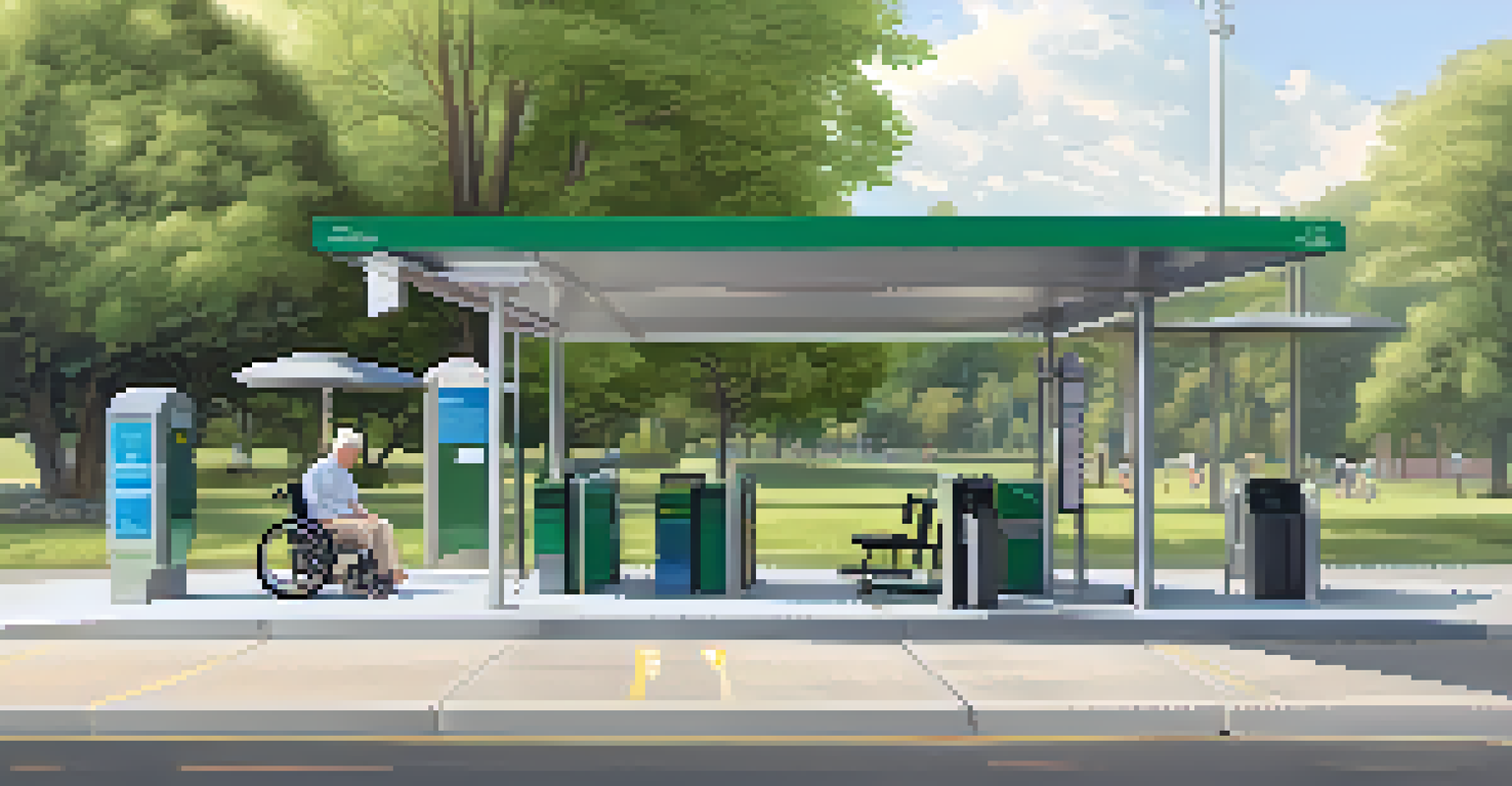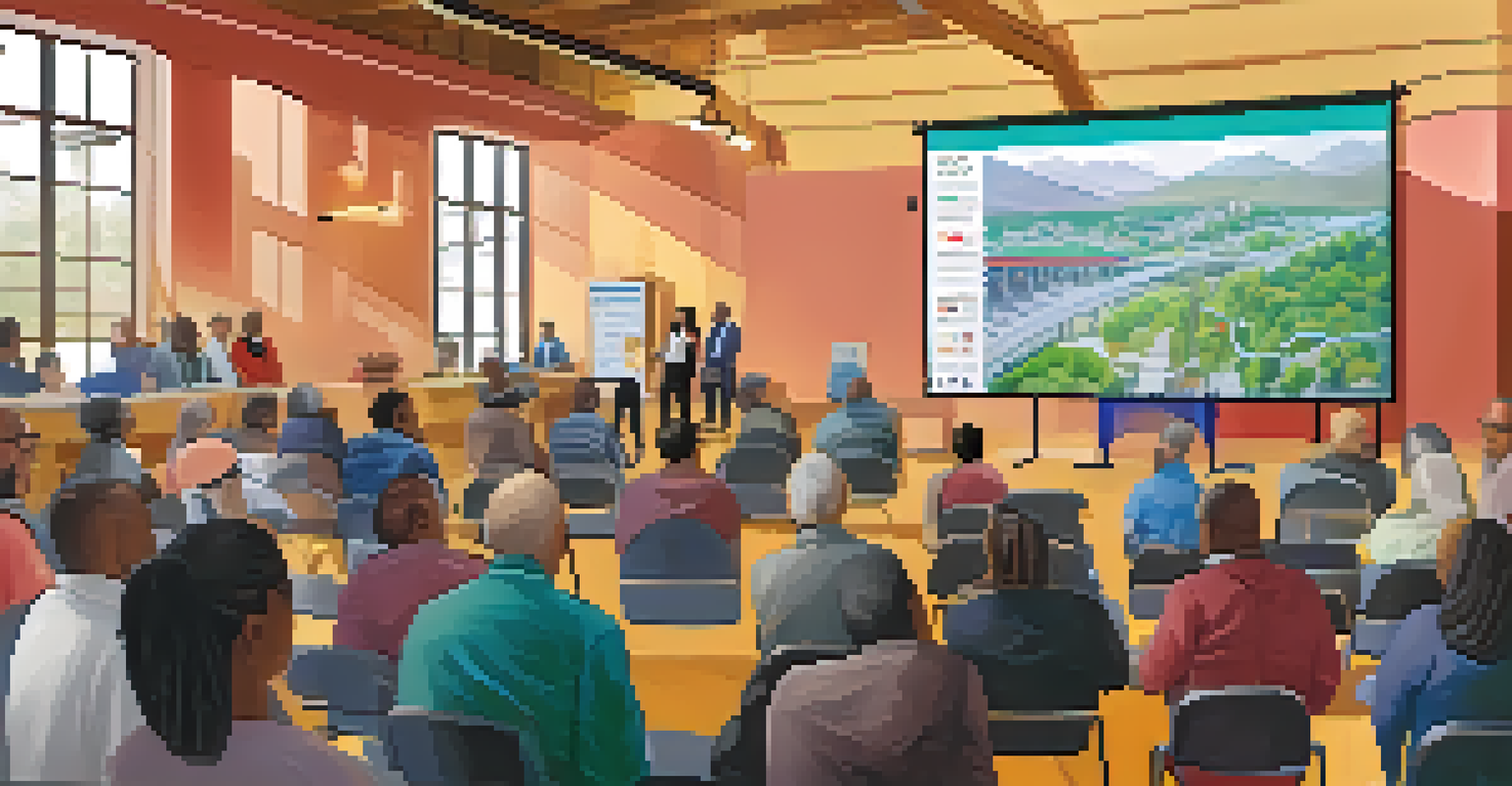Public Transport Accessibility for Disabled Individuals in AZ

Understanding Public Transport Accessibility Challenges
Public transport accessibility is a critical issue for disabled individuals. In Arizona, many face significant barriers that make using public transit challenging. These challenges can range from physical obstacles, like steps and narrow aisles, to a lack of information about available services.
Accessibility allows us to tap into everyone’s potential.
For instance, a person using a wheelchair may find it difficult to board a bus that isn't equipped with a ramp. Additionally, individuals with visual impairments might struggle with poorly marked signage or insufficient audio announcements. These hurdles not only limit mobility but can also affect independence and confidence.
By recognizing these challenges, we can begin to explore solutions that enhance accessibility, ensuring that public transport is a viable option for everyone. This understanding is the first step toward creating a more inclusive transportation system in Arizona.
Current State of Public Transport in Arizona
Arizona's public transport system includes buses, light rail, and paratransit services, but accessibility varies widely across regions. In urban areas like Phoenix, there are more resources and infrastructure in place compared to rural areas, where options can be limited. This disparity can leave many disabled individuals without reliable transport.

For example, in Phoenix, the Valley Metro system has made strides in providing accessible buses and light rail vehicles. However, in smaller towns, the lack of accessible transport options can isolate individuals who rely on public transit for work and social activities. It's crucial to recognize these differences to address specific needs effectively.
Accessibility Challenges Persist
Many disabled individuals in Arizona face significant barriers in public transport, from physical obstacles to inadequate information.
Understanding the current state of public transport in Arizona helps highlight where improvements are most urgently needed. By comparing urban and rural access, we can identify gaps and advocate for more inclusive services throughout the state.
Legislation Impacting Transport Accessibility
Legislation plays a critical role in shaping public transport accessibility for disabled individuals. In the U.S., the Americans with Disabilities Act (ADA) mandates that public transport systems be accessible to all. This law has propelled many improvements in Arizona, ensuring that new vehicles and facilities meet specific accessibility standards.
The greatest disability is not having access.
However, while the ADA provides a strong foundation, enforcement and compliance can vary. Some transit agencies may struggle to fully implement these standards due to budget constraints or lack of awareness. This inconsistency can leave disabled individuals at a disadvantage, unable to access necessary transportation.
It's essential to keep advocating for adherence to these laws while also pushing for additional measures that address the unique needs of disabled individuals in Arizona. Continuous evaluation and reform are needed to ensure everyone can benefit from accessible public transport.
Community Initiatives Supporting Accessibility
Community initiatives are vital in promoting public transport accessibility in Arizona. Various nonprofit organizations and advocacy groups work tirelessly to raise awareness and implement programs that support disabled individuals. These initiatives often focus on providing education, resources, and direct assistance to those in need.
For example, local organizations might offer training sessions for disabled individuals on how to navigate public transport systems effectively. They also advocate for improvements, such as more accessible bus stops or better scheduling of paratransit services. These grassroots efforts can lead to significant changes in the community.
Legislation and Advocacy Needed
While the ADA provides a framework for accessibility, consistent enforcement and community advocacy are crucial for real improvements.
By fostering partnerships between transit agencies and community organizations, Arizona can build a more inclusive transport network. These collaborations can help ensure that the voices of disabled individuals are heard and considered in future transport planning.
Technology's Role in Enhancing Accessibility
Technology is increasingly playing a pivotal role in improving public transport accessibility. Innovations such as mobile apps can provide real-time information about bus and train arrivals, helping disabled individuals plan their trips more effectively. These tools make navigating the public transport system easier and more efficient.
Additionally, companies are developing specialized apps that cater to the needs of disabled users, offering features like audio descriptions and route customization. For instance, some apps can provide step-free routes for wheelchair users or highlight accessible facilities at transit stations. This technological advancement fosters independence and confidence among users.
However, it's important to ensure that all disabled individuals have access to these technologies. Efforts should be made to bridge the digital divide and provide training to those who may not be familiar with using smartphones or apps. By doing so, we can maximize the benefits of technology in enhancing transport accessibility.
Feedback Mechanisms for Continuous Improvement
Creating effective feedback mechanisms is crucial for ensuring public transport remains accessible. Transit agencies in Arizona must actively seek input from disabled individuals to understand their experiences and identify areas for improvement. This process can involve surveys, focus groups, and community meetings, encouraging open dialogue.
For example, feedback from users can highlight specific issues with bus stops, such as insufficient seating or poor lighting. By addressing these concerns, agencies can make informed decisions that directly enhance accessibility. Regular communication fosters trust and encourages individuals to share their thoughts and experiences.
Technology Enhances Navigation
Innovative mobile apps are improving public transport accessibility by offering real-time information and tailored features for disabled users.
Ultimately, feedback is essential for continuous improvement in public transport. By listening to the needs of disabled individuals, Arizona can work towards a more inclusive transportation system that serves everyone effectively.
Looking Ahead: Future of Public Transport Accessibility
The future of public transport accessibility in Arizona hinges on ongoing commitment and innovation. As awareness of accessibility issues grows, there is potential for significant advancements in how transit services are designed and delivered. This includes investing in more accessible vehicles, infrastructure, and technology.
Moreover, collaboration among government agencies, community organizations, and transit authorities will be crucial in shaping a more inclusive future. By working together, stakeholders can create comprehensive plans that address the diverse needs of disabled individuals across the state. This approach not only improves transport options but also enhances overall quality of life.

As we look ahead, it's essential to remain vigilant and proactive in advocating for accessibility. With the right strategies and dedication, Arizona can become a model for public transport accessibility that empowers all individuals, regardless of their abilities.